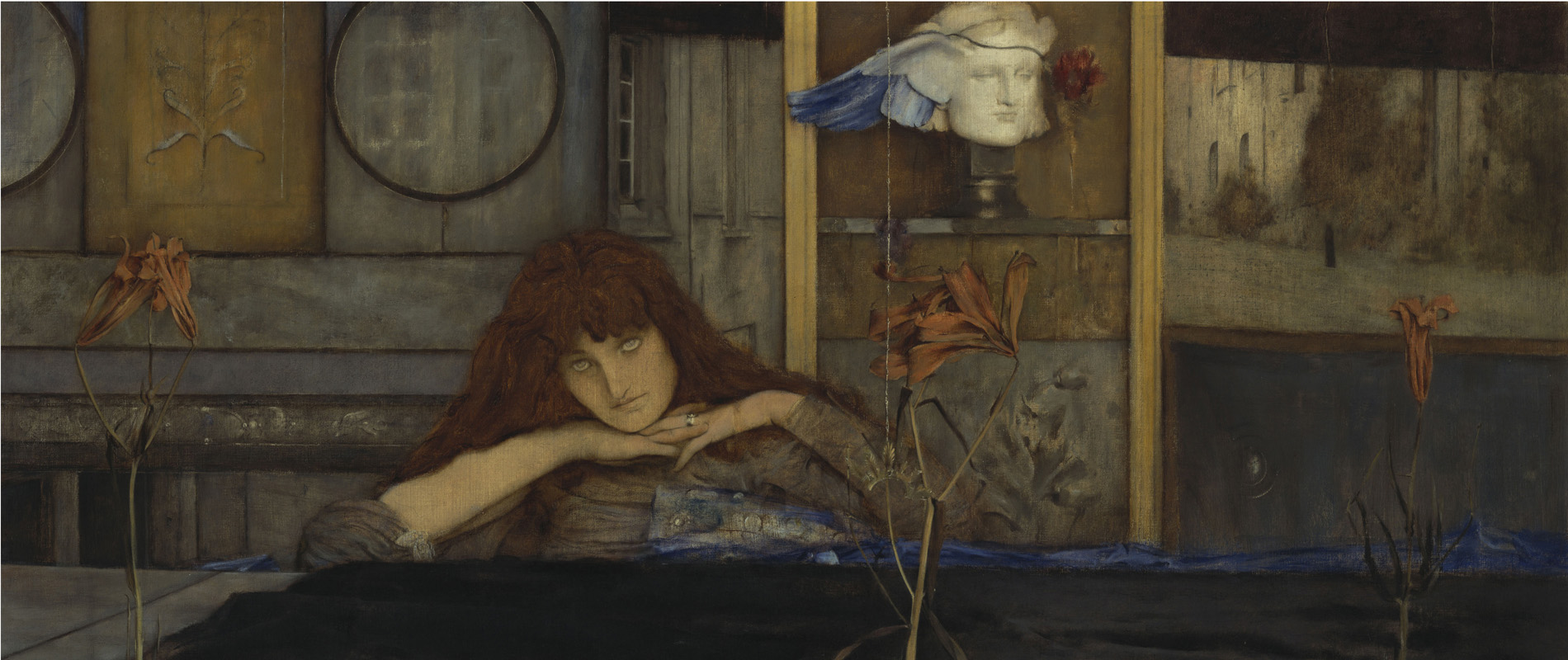The desirous gaze into the abyss, the exaggerated aestheticism of a glutted society that at the same time believes itself to be in crisis, the morbid magnetism of Thanatos and Eros – all these are artistic topics that took shape in the late nineteenth century and found expression especially in Belgian Symbolism. In the 1880s, in resistance to the charm of the surface as championed by Naturalism and Impressionism, a new art movement emerged, one whose hallmarks were sensuality, magic, deep meaning as well as irrationality. Symbolism from the beginning artistically anticipated Freud’s Interpretation of Dreams, a study which appeared in 1899.
Peculiar to Belgian symbolism is a predilection for morbid and decadent subject matter. Already in mid-century, Antoine Wiertz ushered in death and decline as leitmotifs in art, as can be observed in a range of artists, from sculptors such as George Minne to the master of the absurd James Ensor. Inspired by contemporary literature, artists around 1900 attempted to unite a new mysticism with an extravagant and precious style, as seen for example in the sculpture of Charles van der Stappen with its combination of valuable materials. Advancing to become a central figure in this context was the femme fatale as an expression of excess and lust, encountered for example in the work of Fernand Khnopff. In the case of Felicien Rops and Jean Delville, aspects of the esoteric and demonic enter the picture as well. Symbolism, however, did not influence portraiture and figure painting alone; as paysage symboliste, it also found a reflection in landscape painting, for example that of William Degouve de Nuncques and Fernand Khnopff, as well as in the uncanny interiors of such artists as Leon Spilliaert, Xavier Mellery and Georges Lebrun.

